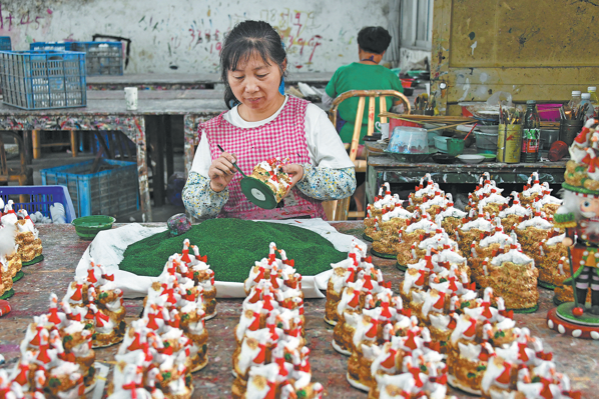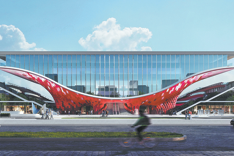Architects in China are building for the future

One of the things that most excited me about coming to Beijing was the chance to live in a millennia-old society with a foot in the future. In Lebanon, my home for 20 years before Beijing, I had plenty of the former-Beirut, Sidon, Tyre and Byblos are among the oldest continually inhabited cities on Earth-but little of the latter.
With its ambitious space program and fast-developing artificial intelligence industry, China seemed to have its sights set firmly on tomorrow. Visually, it also seemed to be thinking about the future, home to almost half of the world's 100 tallest buildings. In the soaring, illuminated cityscapes of Shanghai, Guangzhou and Chongqing, I saw thrilling expressions of the belief in tomorrow.
So, when I read earlier this year that the National Development and Reform Commission, China's planning agency, had decided to place a moratorium on new buildings over 500 meters, and tight controls on those over 250 meters, I confess that my heart sank a little.
The effect was immediate. The designers of Suzhou Zhongnan Center shaved 230 meters off its original height, proposing to top out at a more modest 499.2 meters, and other towers planned for Chengdu and Shenyang appear to have followed suit. It seemed my dreams of waking up one day on the 97th floor and having coffee on a blustery balcony overlooking the world had been derailed-the question of whether I could ever afford such lofty views naturally being moot.
The NDRC's reasoning made sense. Apart from cities like Singapore, Hong Kong and (ironically) Beirut, where land is limited, building up is more about prestige than practicality. Skyscrapers take time to fill; both the Empire State Building and Petronas Towers took over a decade, while Dubai's Burj Khalifa, which opened in 2010, was still at 80 percent occupancy as of last year. In a country with room to expand, the decision was understandable. The enormous cost of building and maintaining skyscrapers, their environmental impact and their vulnerability to economic shocks can make them less desirable.
Thankfully, my dreams of living in "tomorrowland" soon found new hope. Height isn't the only signifier of architectural modernity, and if the future of China's buildings has been brought back to earth (as it were), after decades of the country's more striking buildings being designed by the SOMs, Zaha Hadids, and Bjarke Ingels of the world, Chinese architects are increasingly taking control of what their future will look like-and the flood of brave, new architecture they are producing is increasingly turning heads abroad.
In recent years, practices like Studio Zhu Pei, WZWX Architecture Group and Wutopia Lab have graced the pages of international architectural publications.
They are also scooping up awards, and if last year's winners, among them Atelier Tao+C's capsule hotel and library in the bamboo forests of Zhejiang province's Tonglu, MUDA-Architects' Garden Hotpot restaurant in Chengdu, and MAD's Entrepreneurs' Congress Center in Heilongjiang province's Yabuli, are any indication, Chinese modernism does not have any one face, and experiments abound.
What it does have-although here the sinuous, alien forms favored by MAD are perhaps outliers-is the drive to reinterpret traditional architectural methods, styles and materials, and adapt them to contemporary needs. As a result, they are each, in their own way, as recognizably Chinese as say, Tadao Ando's concrete confections are Japanese.
For now, modern Chinese architecture is a domestic affair, but the growing buzz suggests that is likely to change. So while they may no longer be reaching for the sky, it seems Chinese architects still have their sights set firmly on creating the world of tomorrow.

Today's Top News
- PLA fully capable of crushing secessionist attempts
- China holds central rural work conference
- President Xi to deliver New Year's message to ring in 2026
- Xi's diplomacy in 2025: Shedding light on a world at crossroads
- FTP has given Sanya a complete makeover
- China to apply lower import tariff rates to unleash market potential






























